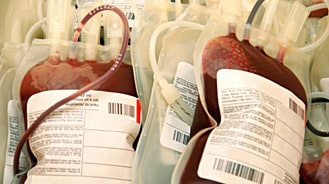What to know
- Zika virus can be spread by blood transfusion. However, there have been no confirmed cases of Zika virus being spread by blood transfusion in the United States.
- Zika virus may be detected in some human cell and tissue-based products for months after infection.
- You may need to delay blood and tissue donations following Zika virus infection.

Background
- There have been no confirmed cases of Zika virus being spread by blood transfusion in the United States. However, cases of Zika virus transmission through platelet transfusions have been documented in Brazil.
- During the large outbreak of Zika virus in the Americas starting in late 2015, the U.S. Food and Drug Administration (FDA) required blood products to be tested for Zika virus.
- In May 2021, in response to the decline in the incidence of Zika virus in the United States and worldwide, FDA removed the requirement for Zika virus testing of blood donations.
- Certain human cell and tissue-based products, such as umbilical cord blood, gestational tissues, and reproductive tissues, can harbor Zika virus even months after the initial infection.
- In May 2024, in response to the decline in the incidence of Zika virus in the United States and worldwide, FDA removed the requirement for Zika virus screening for donors of human cells, tissues, and cellular and tissue-based products (HCT/Ps).
Recommendations
- If you have been diagnosed with Zika virus in the last 4 months, let your blood center know and do not donate blood. Blood donors must be healthy and well and in some people it might take up to 4 months to clear the virus from their blood.
- If you were diagnosed with Zika virus shortly after giving blood, tell your blood center.
- If you have been diagnosed with or possibly exposed to Zika virus within the past 6 months, do not donate cells or tissues, such as umbilical cord blood, placenta or other gestational tissues, or reproductive tissues (oocytes [eggs] or semen).
Partners in blood and tissue safety
Protecting the blood and tissue supply involves many partners.
- AABB – Association for the Advancement of Blood & Biotherapies
- FDA – Vaccines, Blood & Biologics Website
- State and territorial health departments
- Blood collection centers
- Human cells, tissues, and cellular and tissue-based products industry
- Barjas-Castro ML, Angerami RN, Cunha MS, et al. Probable transfusion-transmitted Zika virus in Brazil. Transfusion. 2016;56(7):1684–1688. doi:10.1111/trf.13681
- Motta IJF, Spencer BR, Cordeiro da Silva SG, et al. Evidence for transmission of Zika virus by platelet transfusion. N Engl J Med. 2016;375(11):1101–1103. doi:10.1056/NEJMc1607262.
- Benjamin I, Fernandez G, Figueira JV, et al. Zika virus detected in amniotic fluid and umbilical cord blood in an in vitro fertilization-conceived pregnancy in Venezuela. Fertil Steril. 2017;107(6):1319-1322. doi:10.1016/j.fertnstert.2017.01.112.
- GarcÍa-Bujalance S, Gutiérrez-Arroyo A, De la Calle F, et al. Persistence and infectivity of Zika virus in semen after returning from endemic areas: Report of 5 cases. J Clin Virol. 2017;96:110-115. doi:10.1016/j.jcv.2017.10.006.
- Paz-Bailey G, Rosenberg ES, Sharp TM. Persistence of Zika Virus in Body Fluids – Final Report. N Engl J Med. 2019;380(2):198-199. doi:10.1056/NEJMc1814416.
